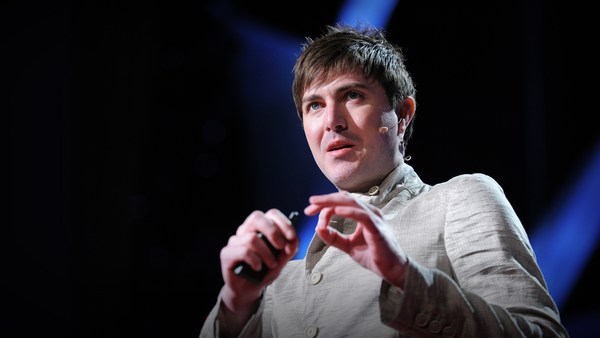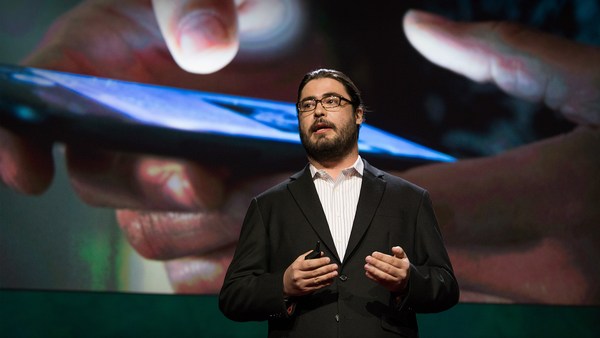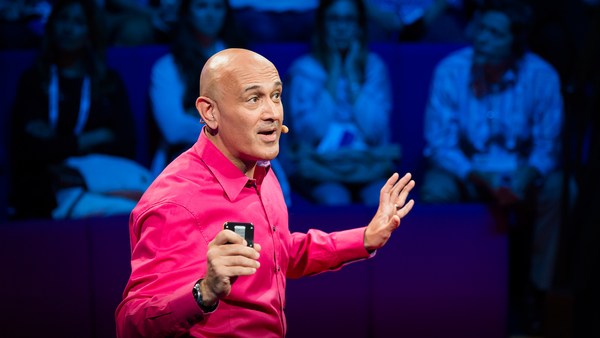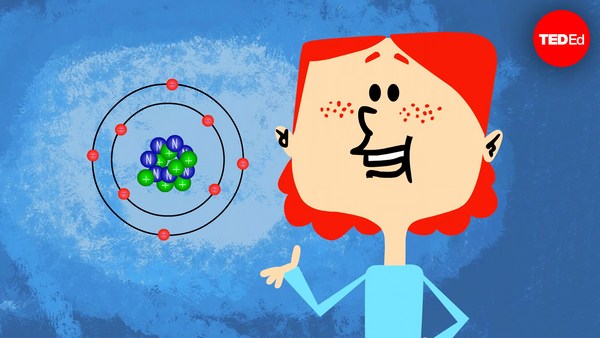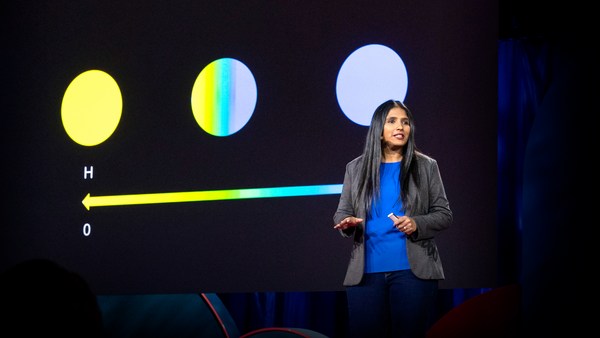Recently, we've seen the effects of cyber attacks on the business world. Data breaches at companies like JP Morgan, Yahoo, Home Depot and Target have caused losses of hundreds of millions and in some cases, billions of dollars. It wouldn't take many large attacks to ravage the world economy. And the public sector has not been immune, either. In 2012 to 2014, there was a significant data breach at the US Office of Personnel Management. Security clearance and fingerprint data was compromised, affecting 22 million employees. And you may have heard of the attempt by state-sponsored hackers to use stolen data to influence election outcomes in a number of countries. Two recent examples are the compromise of a large amount of data from the Bundestag, the national Parliament of Germany, and the theft of emails from the US Democratic National Committee. The cyber threat is now affecting our democratic processes. And it's likely to get worse.
As computer technology is becoming more powerful, the systems we use to protect our data are becoming more vulnerable. Adding to the concern is a new type of computing technology, called quantum computing, which leverages microscopic properties of nature to deliver unimaginable increases in computational power. It's so powerful that it will crack many of the encryption systems that we use today.
So is the situation hopeless? Should we start packing our digital survival gear and prepare for an upcoming data apocalypse? I would say, not yet. Quantum computing is still in the labs, and it will take a few years until it's put to practical applications. More important, there have been major breakthroughs in the field of encryption. For me, this is a particularly exciting time in the history of secure communications. About 15 years ago, when I learned of our new-found ability to create quantum effects that don't exist in nature, I was excited. The idea of applying the fundamental laws of physics to make encryption stronger really intrigued me. Today, a select groups of companies and labs around the world, including mine, are maturing this technology for practical applications. That's right. We are now preparing to fight quantum with quantum.
So how does this all work? Well, first, let's take a quick tour of the world of encryption. For that, you'll need a briefcase, some important documents that you want to send your friend, James Bond, and a lock to keep it all safe. Because the documents are top secret, we're going to use an advanced briefcase. It has a special combination lock which, when closed, converts all the text in the documents to random numbers. So you put your documents inside, close the lock -- at which point in time the documents get converted to random numbers -- and you send the briefcase to James. While it's on its way, you call him to give him the code. When he gets the briefcase, he enters the code, the documents get unscrambled, and voilà, you've just sent an encoded message to James Bond.
(Laughter)
A fun example, but it does illustrate three things important for encryption. The code -- we call this an encryption key. You can think of it as a password. The call to James to give him the code for the combination lock. We call this key exchange. This is how you ensure you get the encryption key securely to the right place. And the lock, which encodes and decodes the document. We call this an encryption algorithm. Using the key, it encodes the text in the documents to random numbers. A good algorithm will encode in such a way that without the key it's very difficult to unscramble.
What makes encryption so important is that if someone were to capture the briefcase and cut it open without the encryption key and the encryption algorithm, they wouldn't be able to read the documents. They would look like nothing more than a bunch of random numbers. Most security systems rely on a secure method for key exchange to communicate the encryption key to the right place. However, rapid increases in computational power are putting at risk a number of the key exchange methods we have today.
Consider one of the very widely used systems today -- RSA. When it was invented, in 1977, it was estimated that it would take 40 quadrillion years to break a 426-bit RSA key. In 1994, just 17 years later, the code was broken. As computers have become more and more powerful, we've had to use larger and larger codes. Today we routinely use 2048 or 4096 bits. As you can see, code makers and breakers are engaged in an ongoing battle to outwit each other. And when quantum computers arrive in the next 10 to 15 years, they will even more rapidly crack the complex mathematics that underlies many of our encryption systems today. Indeed, the quantum computer is likely to turn our present security castle into a mere house of cards. We have to find a way to defend our castle.
There's been a growing body of research in recent years looking at using quantum effects to make encryption stronger. And there have been some exciting breakthroughs. Remember those three things important for encryption -- high-quality keys, secure key exchange and a strong algorithm? Well, advances in science and engineering are putting two of those three elements at risk. First of all, those keys. Random numbers are the foundational building blocks of encryption keys. But today, they're not truly random. Currently, we construct encryption keys from sequences of random numbers generated from software, so-called pseudo-random numbers. Numbers generated by a program or a mathematical recipe will have some, perhaps subtle, pattern to them. The less random the numbers are, or in scientific terms, the less entropy they contain, the easier they are to predict.
Recently, several casinos have been victims of a creative attack. The output of slot machines was recorded over a period of time and then analyzed. This allowed the cyber criminals to reverse engineer the pseudo-random number generator behind the spinning wheels. And allowed them, with high accuracy, to predict the spins of the wheels, enabling them to make big financial gains.
Similar risks apply to encryption keys. So having a true random number generator is essential for secure encryption. For years, researchers have been looking at building true random number generators. But most designs to date are either not random enough, fast enough or aren't easily repeatable. But the quantum world is truly random. So it makes sense to take advantage of this intrinsic randomness. Devices that can measure quantum effects can produce an endless stream of random numbers at high speed. Foiling all those would-be casino criminals.
A select group of universities and companies around the world are focused on building true random number generators. At my company, our quantum random number generator started life on a two meter by one meter optic table. We were then able to reduce it to a server-size box. Today, it's miniaturized into a PCI card that plugs into a standard computer. This is the world's fastest true random number generator. It measures quantum effects to produce a billion random numbers per second. And it's in use today to improve security at cloud providers, banks and government agencies around the world.
(Applause)
But even with a true random number generator, we've still got the second big cyber threat: the problem of secure key exchange. Current key exchange techniques will not stand up to a quantum computer. The quantum solution to this problem is called quantum key distribution or QKD, which leverages a fundamental, counterintuitive characteristic of quantum mechanics. The very act of looking at a quantum particle changes it. Let me give you an example of how this works.
Consider again exchanging the code for the lock with James Bond. Except this time, instead of a call to give James the code, we're going to use quantum effects on a laser to carry the code and send it over standard optic fiber to James. We assume that Dr. No is trying to hack the exchange. Luckily, Dr. No's attempt to intercept the quantum keys while in transit will leave fingerprints that James and you can detect. This allows those intercepted keys to be discarded. The keys which are then retained can be used to provide very strong data protection. And because the security is based on the fundamental laws of physics, a quantum computer, or indeed any future supercomputer will not be able to break it.
My team and I are collaborating with leading universities and the defense sector to mature this exciting technology into the next generation of security products. The internet of things is heralding a hyperconnected era with 25 to 30 billion connected devices forecast by 2020. For the correct functioning of our society in an IoT world, trust in the systems that support these connected devices is vital. We're betting that quantum technologies will be essential in providing this trust, enabling us to fully benefit from the amazing innovations that are going to so enrich our lives.
Thank you.
(Applause)
